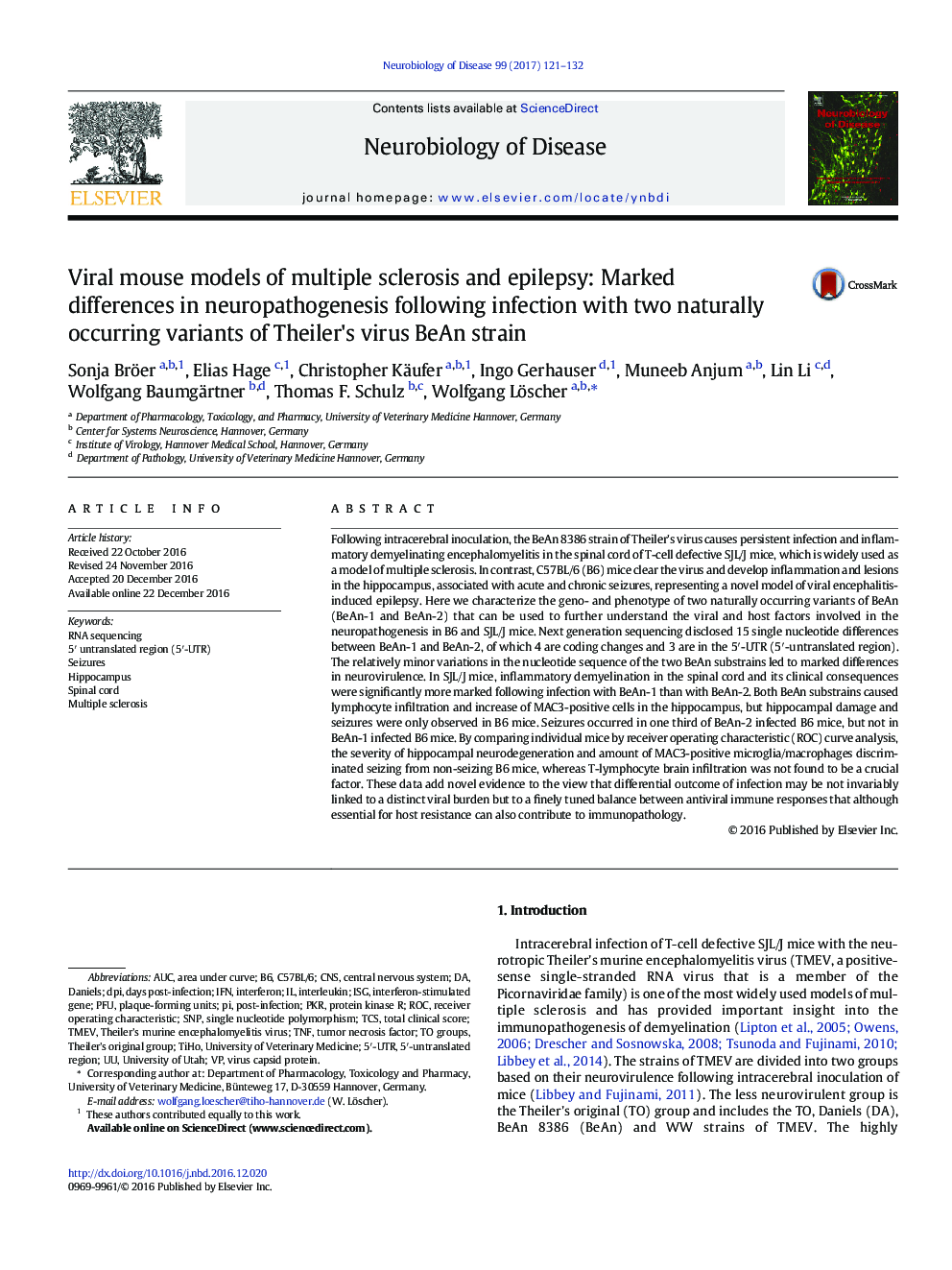| Article ID | Journal | Published Year | Pages | File Type |
|---|---|---|---|---|
| 5630683 | Neurobiology of Disease | 2017 | 12 Pages |
â¢Theiler's virus strains are used to induce models of multiple sclerosis and epilepsy.â¢We characterized the geno- and phenotype of two naturally occurring variants of the BeAn strain.â¢Relatively minor variations in nucleotide sequence led to marked differences in neurovirulence.â¢The BeAn-1 substrain was more neurovirulent in SJL/J mice while BeAn-2 was more virulent in C57BL/6 mice.â¢The virus variants allow insights into the host response in models of neurological diseases.
Following intracerebral inoculation, the BeAn 8386 strain of Theiler's virus causes persistent infection and inflammatory demyelinating encephalomyelitis in the spinal cord of T-cell defective SJL/J mice, which is widely used as a model of multiple sclerosis. In contrast, C57BL/6 (B6) mice clear the virus and develop inflammation and lesions in the hippocampus, associated with acute and chronic seizures, representing a novel model of viral encephalitis-induced epilepsy. Here we characterize the geno- and phenotype of two naturally occurring variants of BeAn (BeAn-1 and BeAn-2) that can be used to further understand the viral and host factors involved in the neuropathogenesis in B6 and SJL/J mice. Next generation sequencing disclosed 15 single nucleotide differences between BeAn-1 and BeAn-2, of which 4 are coding changes and 3 are in the 5â²-UTR (5â²-untranslated region). The relatively minor variations in the nucleotide sequence of the two BeAn substrains led to marked differences in neurovirulence. In SJL/J mice, inflammatory demyelination in the spinal cord and its clinical consequences were significantly more marked following infection with BeAn-1 than with BeAn-2. Both BeAn substrains caused lymphocyte infiltration and increase of MAC3-positive cells in the hippocampus, but hippocampal damage and seizures were only observed in B6 mice. Seizures occurred in one third of BeAn-2 infected B6 mice, but not in BeAn-1 infected B6 mice. By comparing individual mice by receiver operating characteristic (ROC) curve analysis, the severity of hippocampal neurodegeneration and amount of MAC3-positive microglia/macrophages discriminated seizing from non-seizing B6 mice, whereas T-lymphocyte brain infiltration was not found to be a crucial factor. These data add novel evidence to the view that differential outcome of infection may be not invariably linked to a distinct viral burden but to a finely tuned balance between antiviral immune responses that although essential for host resistance can also contribute to immunopathology.
